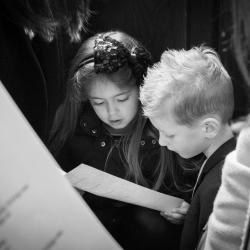Synagogue in Culemborg
The synagogue was built next to an older synagogue which dated back to 1791. The new synagogue was consecrated in 1868. The design of the building was executed in an early Neo-Gothic style in which the the Gothic features were purely ornamental and not structure-related. The Neo-Gothic elements include the plastered octagonal pilasters topped by pinnacles, the rounded frieze and the ornamental door and window frames. The pointed arched windows contain iron-cast tracery. A Hebrew inscription is located above the main entrance and refers to Isaiah 56:7 and the date. The structural expansion at the back side of the building was used as the location for the Torah ark and is still recognizable as such from the outside. The women's gallery is still present in the assembly hall. The Jewish community of Culemborg meerged with Utrecht in the year 1947. Three years later, the building was redeveloped as a Christian Reformed church. In 1981/82, the building was renovated by the architect H. K. J. van der Wielen.
About this building
For more information visit on this building visit http://historicsynagogueseurope.org/browser.php?mode=set&id=25063



